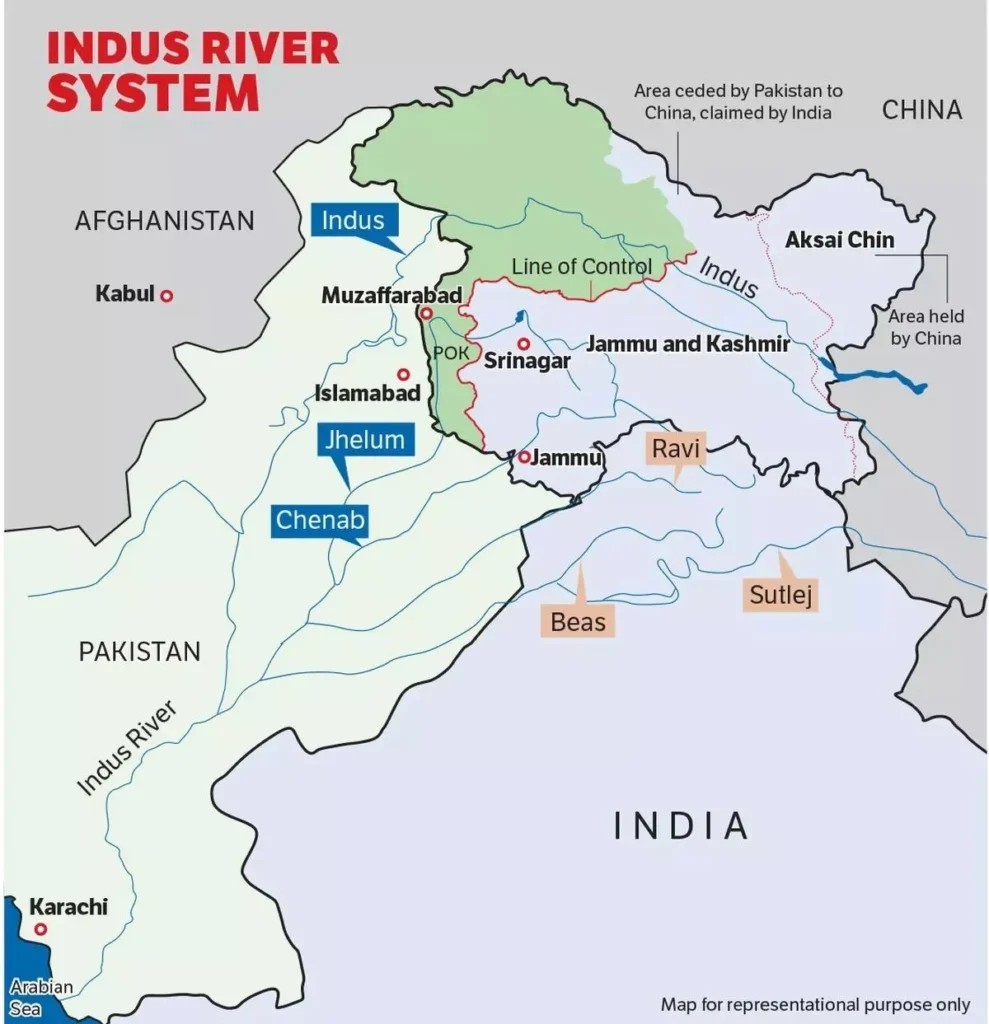India’s Chenab Dams and Indus Treaty Tensions
India’s Chenab Dams and Indus Treaty Tensions
Why in the News ?
Water levels in Chenab river near Akhnoor dropped sharply due to closure of Salal and Baglihar dam gates. This follows India’s decision to keep the Indus Waters Treaty (IWT) in abeyance, raising strategic and agricultural concerns for Pakistan.
About India’s Control Over Chenab and Dams Built:
- Chenab River, a Western River under IWT, is primarily controlled by Pakistan, but India can construct run-of-the-river hydropower projects.
- Key dams on Chenab: Salal, Baglihar, and Dul, all located in Jammu & Kashmir (J&K).
- Baglihar Dam: 143 m high, 450 MW, commissioned in 2009, operated by J&K Power Development Corporation.
- Salal Dam: 81.38 m high, 690 MW, commissioned in stages between 1987-1995, operated by NHPC.
- These dams meet criteria set by the National Dam Safety Authority (NDSA) for “large (specified) dams”.
Indus Waters Treaty Provisions and Abeyance:
- Under IWT (1960), India can use Chenab, Jhelum, and Indus for non-consumptive, domestic, and limited agriculture and hydropower generation.
- Treaty permits run-of-the-river power plants; storage rights are restricted.
- With the treaty in abeyance, India isn’t obligated to share real-time water data with Pakistan.
- J&K Assembly had called for treaty termination in 2002; a consultant was appointed in 2011 to assess losses.
Impact on Pakistan and Regional Sensitivities
- Sudden closing/opening of dam sluice gates affects downstream water flow, alarming Pakistani Punjab during kharif sowing season (especially paddy).
- Narratives in Pakistan claim India uses dams to “starve” Pakistan of Indus system waters.
- Strategic implications post-Pahalgam terror attack led to India hardening stance on water-sharing.
- Self-regulation vs. Statutory regulation, and cross-border cooperation are increasingly under strain due to security concerns.
Key points :Chenab●A major Western River under the Indus Waters Treaty (IWT). Key facts: Salal Dam ●Located on the Chenab River in Jammu & Kashmir. About the Baglihar Dam: ●A run-of-the-river hydroelectric project on the Chenab River in Ramban, J&K. Key points :Indus Waters Treaty ●Signed in 1960 between India and Pakistan under World Bank mediation. Run-of-the-river Projects: ● Hydro projects that use natural water flow without large storage. About NHPC (National Hydroelectric Power Corporation): ●A Government of India enterprise under the Ministry of Power. About National Dam Safety Authority (NDSA): ●Set up under the Dam Safety Act, 2021. About Pahalgam Terror Attack: ●Terror incident in Pahalgam, Jammu & Kashmir in 2024, involving Pakistani terrorists. |




